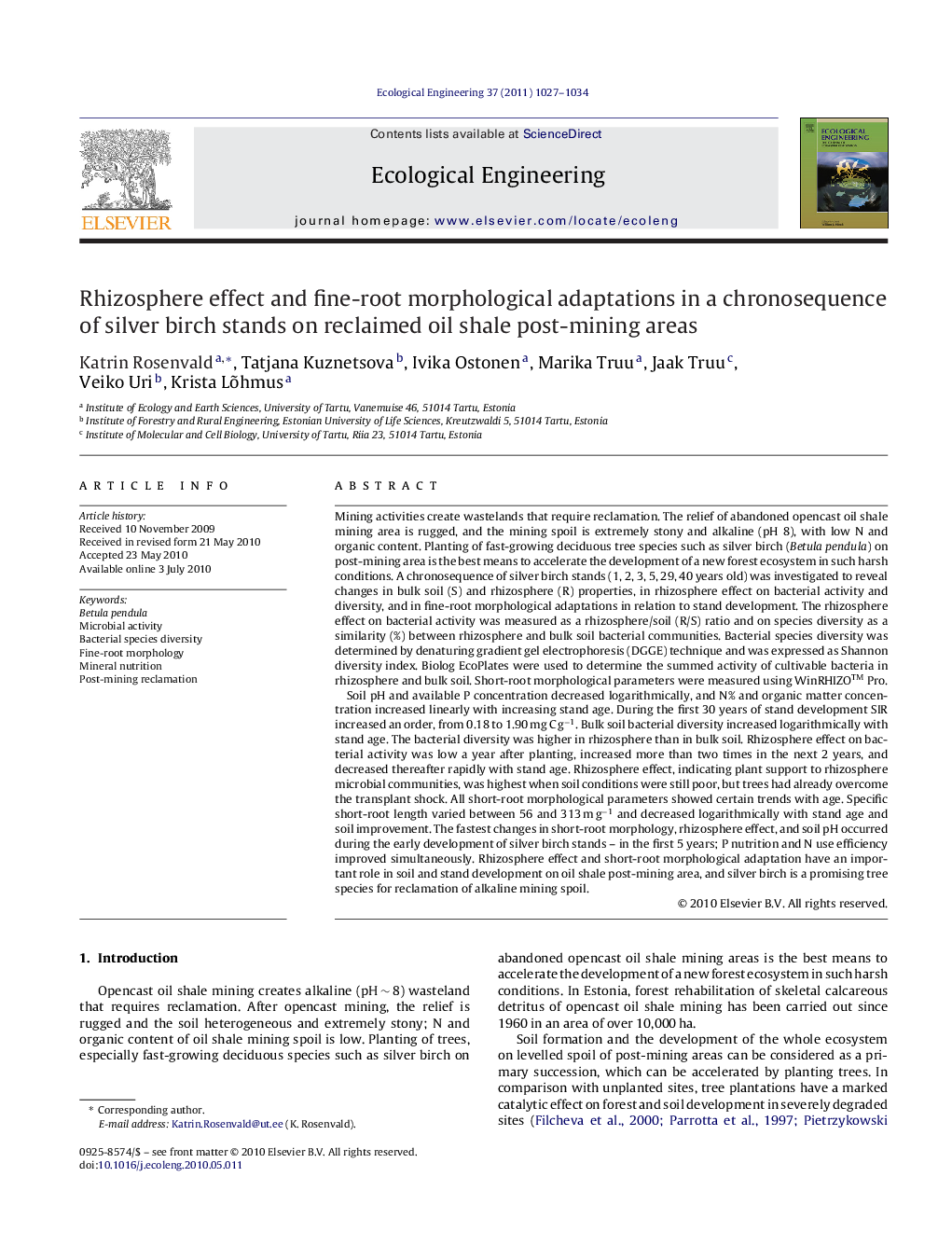| Article ID | Journal | Published Year | Pages | File Type |
|---|---|---|---|---|
| 4390374 | Ecological Engineering | 2011 | 8 Pages |
Mining activities create wastelands that require reclamation. The relief of abandoned opencast oil shale mining area is rugged, and the mining spoil is extremely stony and alkaline (pH 8), with low N and organic content. Planting of fast-growing deciduous tree species such as silver birch (Betula pendula) on post-mining area is the best means to accelerate the development of a new forest ecosystem in such harsh conditions. A chronosequence of silver birch stands (1, 2, 3, 5, 29, 40 years old) was investigated to reveal changes in bulk soil (S) and rhizosphere (R) properties, in rhizosphere effect on bacterial activity and diversity, and in fine-root morphological adaptations in relation to stand development. The rhizosphere effect on bacterial activity was measured as a rhizosphere/soil (R/S) ratio and on species diversity as a similarity (%) between rhizosphere and bulk soil bacterial communities. Bacterial species diversity was determined by denaturing gradient gel electrophoresis (DGGE) technique and was expressed as Shannon diversity index. Biolog EcoPlates were used to determine the summed activity of cultivable bacteria in rhizosphere and bulk soil. Short-root morphological parameters were measured using WinRHIZO™ Pro.Soil pH and available P concentration decreased logarithmically, and N% and organic matter concentration increased linearly with increasing stand age. During the first 30 years of stand development SIR increased an order, from 0.18 to 1.90 mg C g−1. Bulk soil bacterial diversity increased logarithmically with stand age. The bacterial diversity was higher in rhizosphere than in bulk soil. Rhizosphere effect on bacterial activity was low a year after planting, increased more than two times in the next 2 years, and decreased thereafter rapidly with stand age. Rhizosphere effect, indicating plant support to rhizosphere microbial communities, was highest when soil conditions were still poor, but trees had already overcome the transplant shock. All short-root morphological parameters showed certain trends with age. Specific short-root length varied between 56 and 313 m g−1 and decreased logarithmically with stand age and soil improvement. The fastest changes in short-root morphology, rhizosphere effect, and soil pH occurred during the early development of silver birch stands – in the first 5 years; P nutrition and N use efficiency improved simultaneously. Rhizosphere effect and short-root morphological adaptation have an important role in soil and stand development on oil shale post-mining area, and silver birch is a promising tree species for reclamation of alkaline mining spoil.
